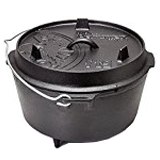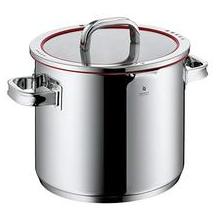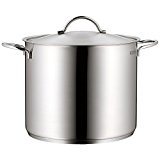Skillet purchasing advice: how to choose the right product
- What you need to know
- Skillets, also known as frying pans or fry pans, can be made from aluminum, cast iron, stainless steel, and copper.
- Most frying pans nowadays have non-stick coatings to stop food from burning to the bottom of the pan.
- Cast iron skillets don’t have a coating and need to be seasoned properly before use.
- There are a wide range of frying pan shapes depending on what you are wanting to cook. These include woks, fish pans, griddle pans, and casseroles.
One pan isn’t enough
Just like pots, pans are essential tools in the kitchen. Without them, we wouldn’t be able to fry or braise food. While young people can often make do with just one basic frying pan to cook simple dishes like fried eggs, after a while, the time comes to update and expand your kitchenware. A good frying pan set is a worthwhile investment: good pans will last for years.
There are some dishes that turn out much better if you have the right pan. For example, fish pans are oval shaped so you can fry an entire fish without worrying about space. They have a flat surface and low edges as it is unlikely the fish will fall out during cooking. By contrast, grill or griddle pans don’t have a flat surface – they have ridges so you can recreate the grill marks you would get on a barbecue. This makes them great for cooking things like steak. If you are a regular home cook, it really makes sense to have a range of frying pans to choose from depending on what you’re preparing.
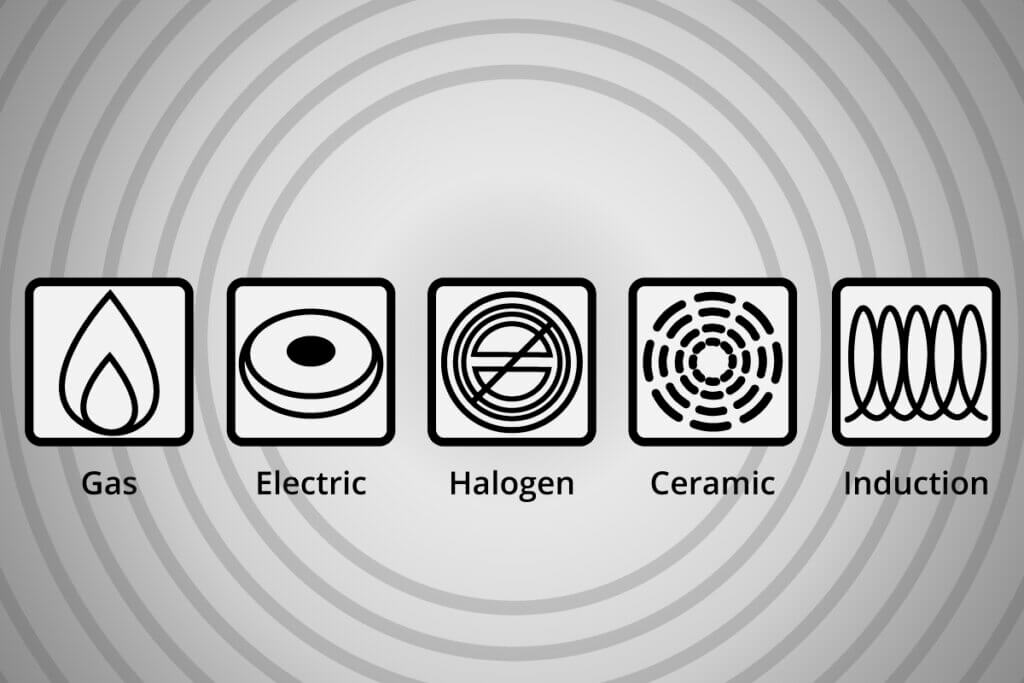
In the past, the range of frying pans available was relatively limited as they tended to only be made from cast iron. Nowadays, there’s a huge range of pans made from different materials on the market.
Pan material
Depending on what you’re cooking, the pan material can make a big difference. For example, cast iron retains heat very well, making it great for shallow frying. However, since it is so heavy, you wouldn’t want to be making a stir fry in it.
Don’t overheat your pans
If you preheat aluminum pans for too long, you run the risk of overheating the metal which can cause harmful chemicals to come out. The same is true for non-stick pans – if you heat them higher than 500 °F (260 °C), the Teflon coating will start to break down.
Beneath is an overview of the different kinds of metals used to make frying pans.
Aluminum
Aluminum frying pans are either cast or made by sheet forming, otherwise known as deep drawing. They usually have non-stick coatings made from enamel, ceramic, or Teflon. Uncoated aluminum pans are relatively rare nowadays – non-stick prevents your food from burning onto the metal.
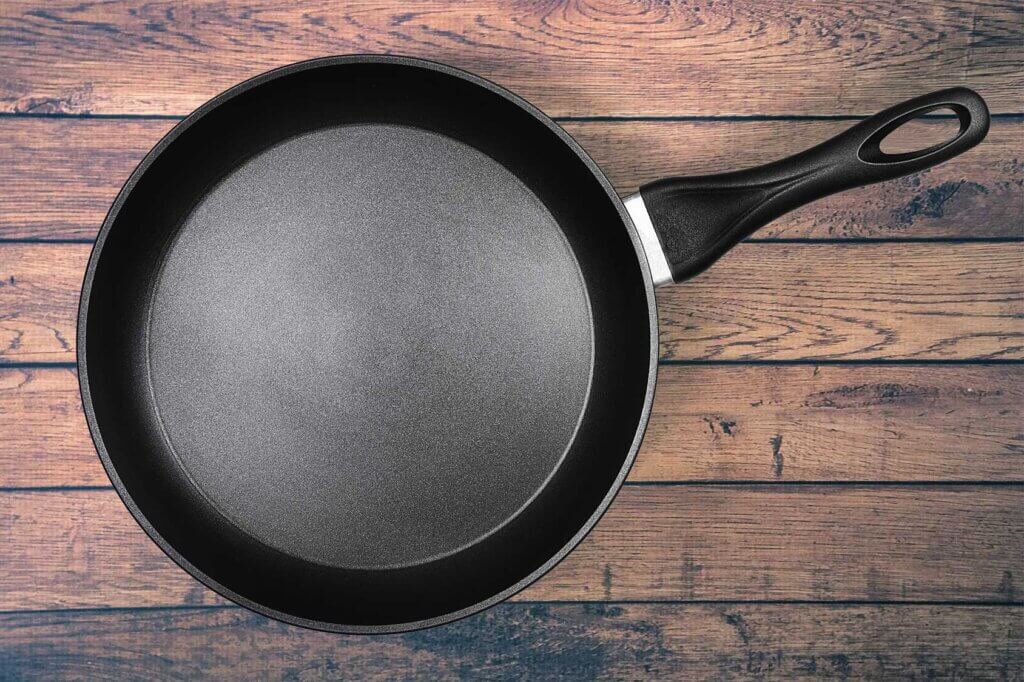
Aluminum pans are the most common type of pan on the market, and for good reason. They are light and easy to handle, and they also heat up quickly. Thanks to their non-stick coating, aluminum pans are easy to clean. Perhaps most importantly though, they are relatively inexpensive compared to other materials.
Some manufacturers will combine materials, so you can get aluminum pans that are reinforced with a stainless steel layer.
Aluminum pans are especially good for:
- Gentle cooking of most foods
- Delicate dishes like omelets
- Fish
- Vegetables
- Eggs
Cheap, low-quality aluminum pans tend to deform and warp faster. If this happens, you’ll need more time and energy to cook because less heat gets transferred to the pan.
Advantages
- Low weight
- Good heat conduction
- Good value for money
- Easy to clean
Disadvantages
- Cheaper pans deform quickly
- Toxic vapors if heated too high
- Non-stick coating can scratch or peel off
Iron
There are three main types of iron frying pans: wrought iron, cast iron, and carbon steel. They can be differentiated by their manufacturing methods. If maintained properly, iron pans are practically indestructible.
Iron pans are sold both coated and uncoated. Uncoated pans need to be seasoned and burned in before use, and then only ever hand washed afterwards. Coated pans require less maintenance, but the coating can be damaged by overheating which will release toxic fumes. If the coating is damaged, food will also burn into the pan. Read on for an overview of the three types of iron pan.
Wrought iron
Wrought iron pans are highly durable. They contain less carbon than cast iron and carbon steel pans, which makes them easier to mold into shape. This is true for both hot and cold forged pans.
Wrought iron pans have thinner bottoms than cast iron pans. This means that they do not distribute heat particularly evenly – the center of the pan is hotter than around the rim. The payoff of this is that wrought iron pans are much lighter and easier to move than cast iron.
Due to their thin bases, wrought iron pans tend to warp if heated unevenly. Make sure to always use a burner that is big enough and center the pan on it. This is especially the case with induction hobs as they can heat iron extremely quickly, causing big temperature differences which can warp the metal.
Advantages
- Durable
- Lighter than cast iron
- Can produce hard sears
Disadvantages
- Poor temperature distribution
- Base can warp
- Tricky maintenance if uncoated
Cast iron
Cast iron pans have been around for a very long time, but they were especially popular in the US during the first half of the twentieth century. In recent years, cast iron has undergone somewhat of a revival, being championed by celebrity chefs and cooking influencers alike.
Cast iron pans are both more durable and much heavier than wrought iron pans. They do not deform, even under high heat. This is due to their manufacturing process. Wrought iron needs a degree of elasticity so it can be moulded, but cast iron does not. Cast iron pans are made from stable iron with a high carbon content (2.5-4%).
Cast iron pans have much thicker bases than wrought iron ones. This means they are better at distributing heat for more even cooking.
Advantages
- Can last a lifetime
- Unlikely to deform
- Even heat distribution
- Can produce hard sears (high heat cooking)
Disadvantages
- Heavy
- Requires more maintenance
Stainless steel
Stainless steel is a rustproof alloy. It mainly consists of iron, with some chromium and nickel. Stainless steel is durable, does not react with food, and is easy to clean. Some models are also alloyed with heat-conductive metals like copper or aluminium to improve their efficiency.
Stainless steel pans are suitable for cooking both meat and vegetables. They are durable and are especially good for roasting too. This said, it is quite easy for food to burn onto them – if you don’t use them properly you can cause corrosion. Stainless steel pans are sensitive to salt, so make sure not to leave them with salty food stuck to them. Also make sure to check before putting your stainless steel pan in the dishwasher – there will be a label from the manufacturer. While you do need to care for your stainless steel pan properly, compared to cast iron they are much less work.
Advantages
- More durable than aluminium
- Easy to clean
- Can be used for roasting
- Often dishwasher-safe
Disadvantages
- No non-stick surface
Copper
Copper is a comparatively soft yet durable metal, highly prized for cookware. Copper pans are made by moulding metal sheets into shape. Copper has extremely good thermal conductivity, very even heat distribution, and heats up rapidly. As a result, copper skillets also lose heat rapidly, making cleaning easier. Pure copper pans are quite light, which makes them easy to handle.
What are copper pans best for?
Copper pans can be used to cook both juicy steaks and crispy fried potatoes.
Despite their advantages, copper pans do have quite a few drawbacks. First and foremost, they are expensive. Prices start around $300 – copper pans are primarily designed for professional cooks and home cooks who really value thermal conductivity no matter the price. Sometimes you do see copper pans advertised for cheaper, but these are often not 100% copper, so watch out. Some manufacturers will advertise their pans as copper even if they only have a coating or a small percentage in the alloy.
Copper pans are also not particularly durable. They can easily scratch and oxidize. In addition to this, they won’t work with induction hobs unless they have a special coating. Copper does react with food, so you’ll often find pans with stainless steel or tin coatings. This lowers heat conductivity but will protect the food.
Advantages
- Excellent thermal conductivity
- Even heat distribution
- Rapid heating and cooling
- Low weight means easy handling
Disadvantages
- Considerably more expensive than other metals
- Tends to scratch and oxidize easily
- Special coating needed for induction cookers
- Copper can react with food
Coatings
When it comes to choosing a frying pan, one of the main things you need to decide on is whether you want one that is coated or uncoated. Coated pans make life easier as they have non-stick properties – you won’t need to worry about your fried eggs burning onto the pan, and cleaning is much easier too. The coating can also protect your pan from damage, meaning it will last longer.
There are also situations in which uncoated pans are a much better option. Sometimes you want fond left on the bottom of the pan – you can deglaze any caramelized residues for extra flavor. Uncoated stainless steel pans are best for this. Hard searing and completely even temperature distribution can also only be achieved with non-coated pans. These pans need to be seasoned before use – more on this in the advice section.
There are a range of different coatings available for frying pans. The most common are PTFE (Teflon), ceramic, and enamel coating. In fact, you can increasingly find cast iron pans with enamel coatings – much easier to maintain than traditional cast iron. Different coatings have different properties, such as temperature resistance. Always read the manufacturer’s instructions before putting your pan in the oven for example.
PTFE (Teflon)
Polytetrafluoroethylene (PTFE), or what we all know as Teflon, is the best-known and most widely-used frying pan coating. Teflon is a brand from DuPont, and so you’ll only see it on products from them or licensed by them – all other manufacturers will refer to the coating as PTFE.
PTFE provides an extremely effective non-stick surface. It is so effective, that you can cook dishes with little to no fat. The downside to the coating is that is is susceptible to scratches: never use metal on a non-stick coating as it will damage it. PTFE is also not suitable for high temperatures: you should never heat an empty coated pan nor put it in the oven. Once PTFE goes above 500 °F (260 °C), it will start to degrade and release chemicals into your food.
Advantages
- Excellent non-stick properties
- Easy to clean
- Low-fat cooking possible
Disadvantages
- Susceptible to scratches
- Gets damaged at high temperatures
- Cannot put in the oven
Ceramic
Ceramic coatings are smooth, scratch-proof, and heat-resistant up to 750 °F (400 °C). They are great for hard sears on things like steaks, just make sure to use oil with a high smoke point. When using a ceramic-coated pan, make sure to heat it gradually – especially if you have an induction cooker. Rapid temperature fluctuations can cause the coating to crack.
Advantages
- Scratch-resistant
- Heat-resistant
- Mostly ovenproof
Disadvantages
- Can lose its non-stick effect with the wrong oil
- Temperature fluctuations can cause damage
Enamel
Enamel coatings have similar properties to ceramic ones. The difference between the two is that enamel is less scratch-proof, but more resistant to temperature fluctuations. They are non-stick, but not as slippery as PTFE-coated pans. Enamel pans are almost all oven proof, you just need to make sure that the handle is either removable or also oven-safe.
Advantages
- More scratch-resistant than PTFE
- Can be used at high temperatures
- Usually oven-proof
Disadvantages
- Less scratch-resistant than ceramic
- Can get damaged by temperature fluctuations
- Less non-stick than PTFE
Pan styles
There are a huge variety of frying pan shapes and sizes out there. Read on for a quick overview of the most common types.
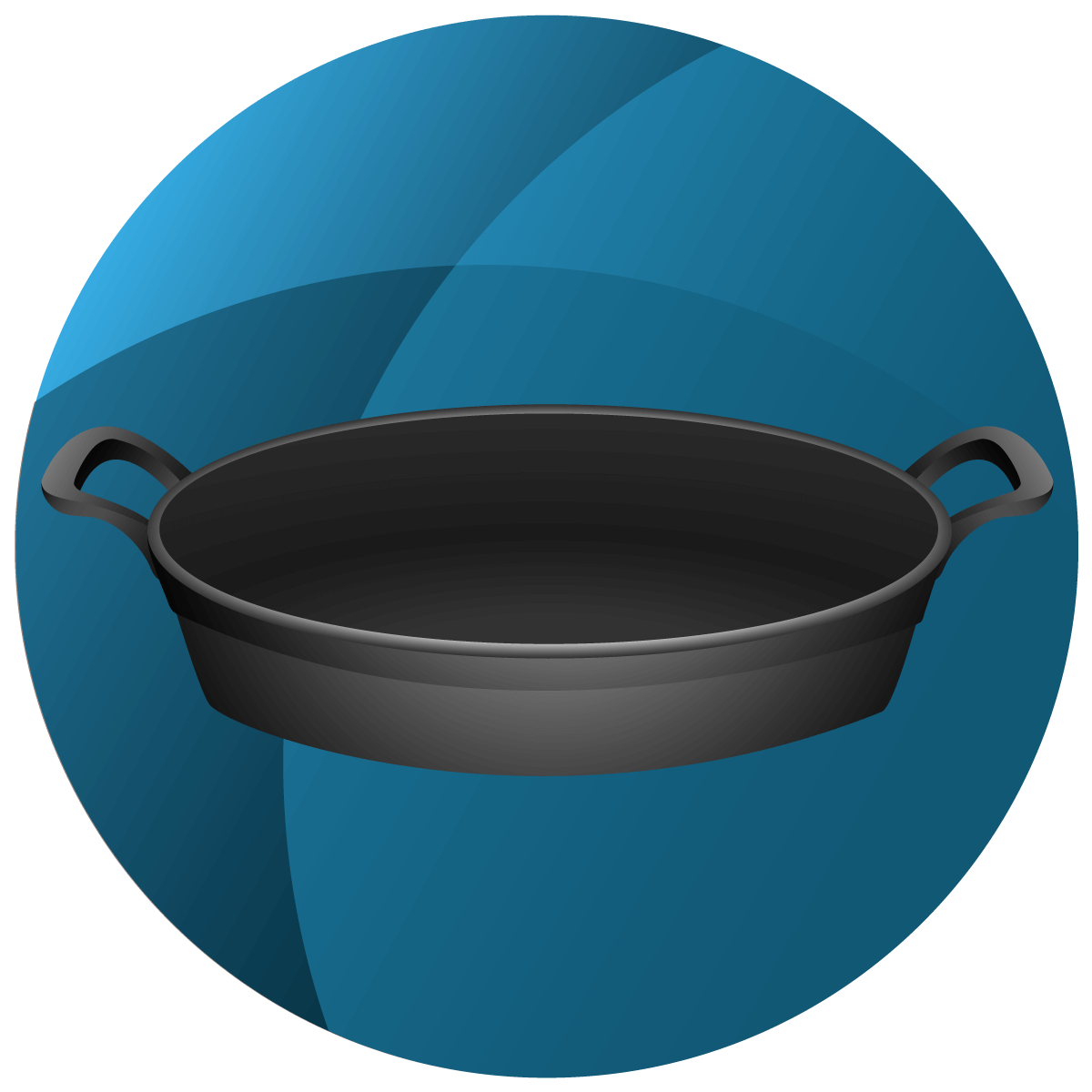
Serving pan
Serving pans have a flat edge that extends outwards. They have two handles that are often heat-insulated so you can easily carry them from cooker to table. They are large and wide – great for sharing dishes.
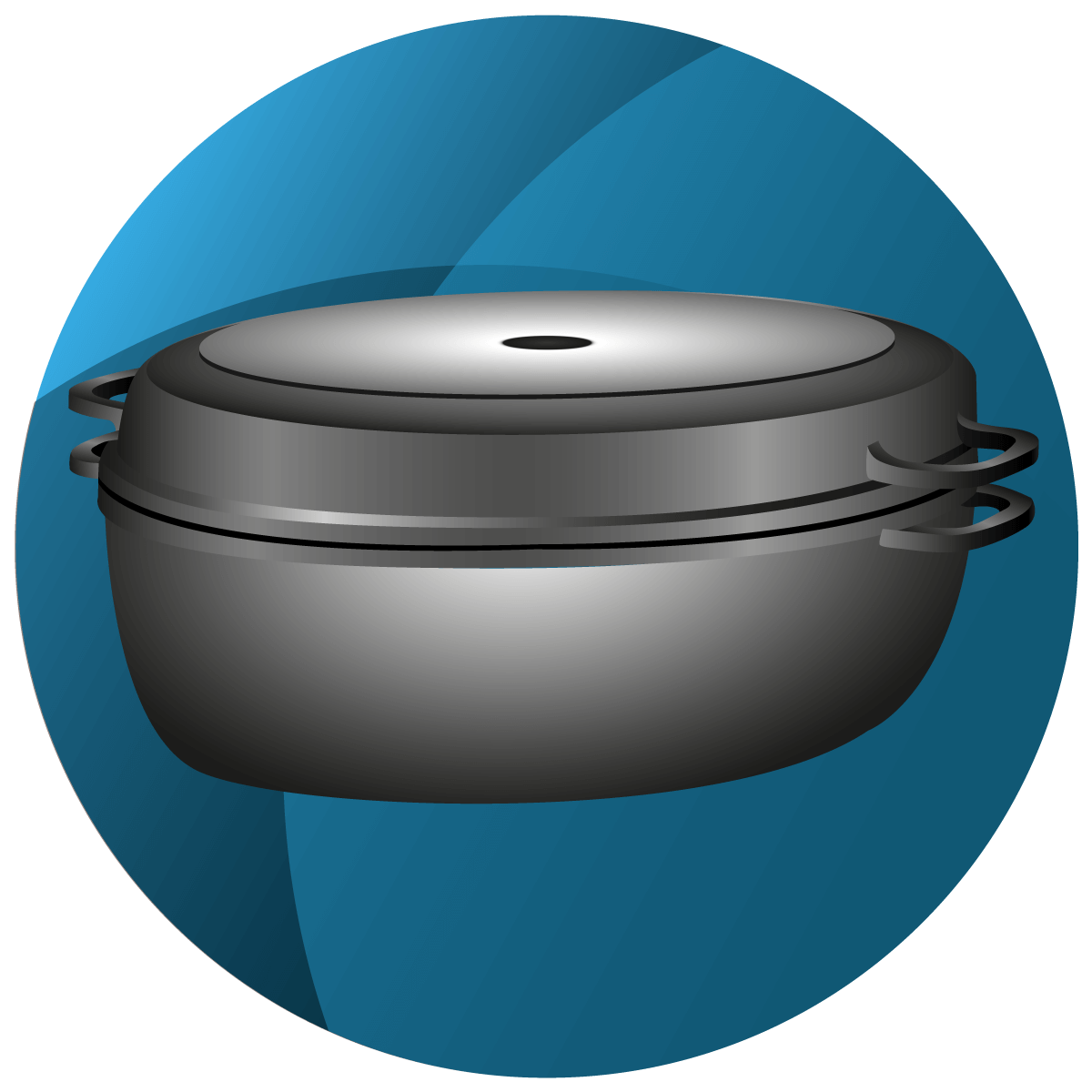
Dutch oven
Dutch ovens have high walls and a relatively large diameter. They can be big, and they are often oval shaped: if you don’t have a burner large enough for your Dutch oven you can heat it spread over two. However, they are mostly used for cooking outdoors.
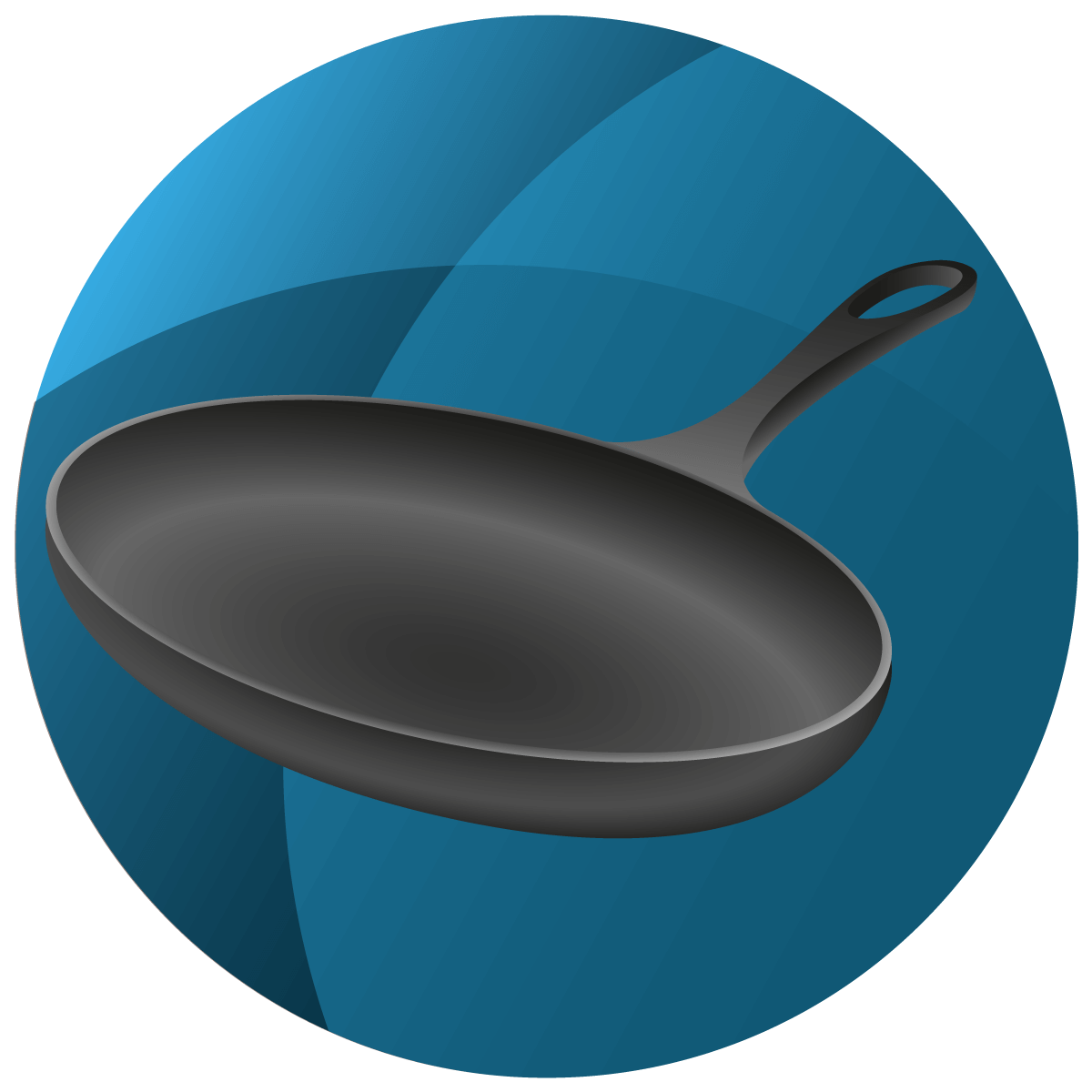
Fish pan
If you frequently cook fish, getting a specialized fish pan is a great idea. Most models are oval shaped – perfect for cooking whole fish. They have low edges to make flipping the fish easier and less likely to break it.
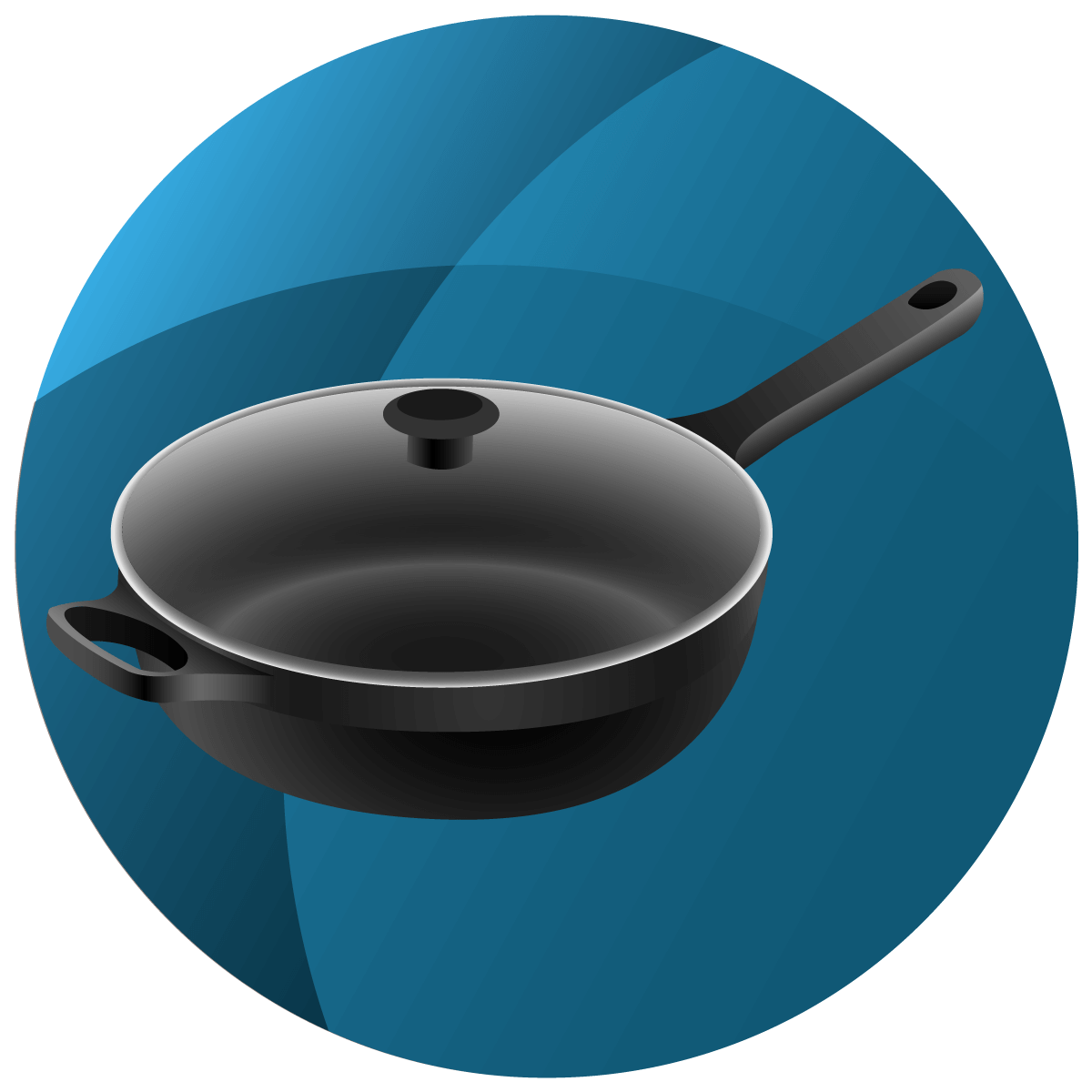
Casserole
Casseroles are designed for slow cooking. They are similar in style to Dutch ovens, with high edges so you can stew meat and fish in them. Stews are great for making meat tender, as well as keeping all the nutrients from vegetables in.
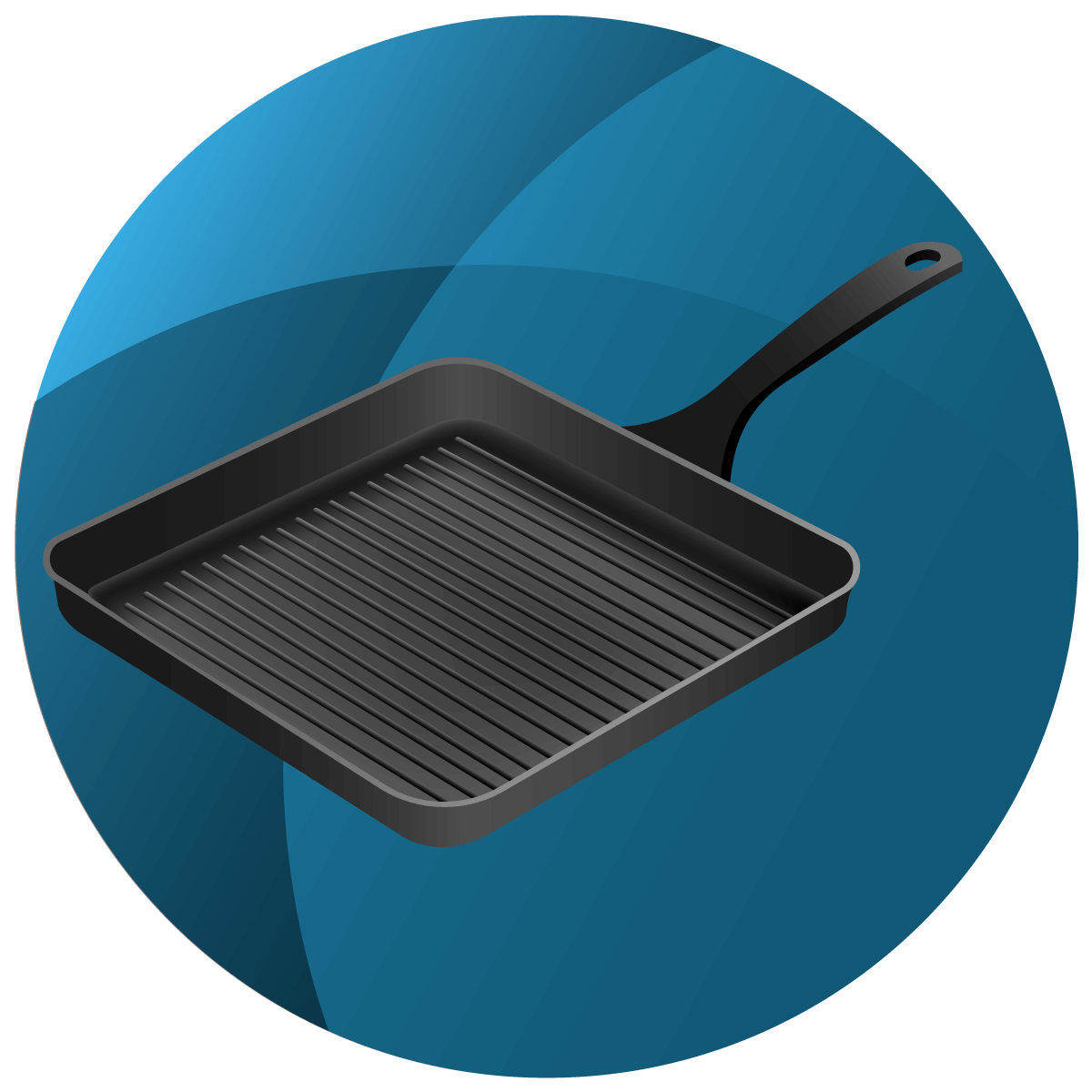
Grill pan
When it’s too cold to fire up the BBQ, grill pans are a great option to get those marks we all love when cooking steak. Also known as griddle pans, they have ridges on cooking surface which produce delicious caramelization marks.
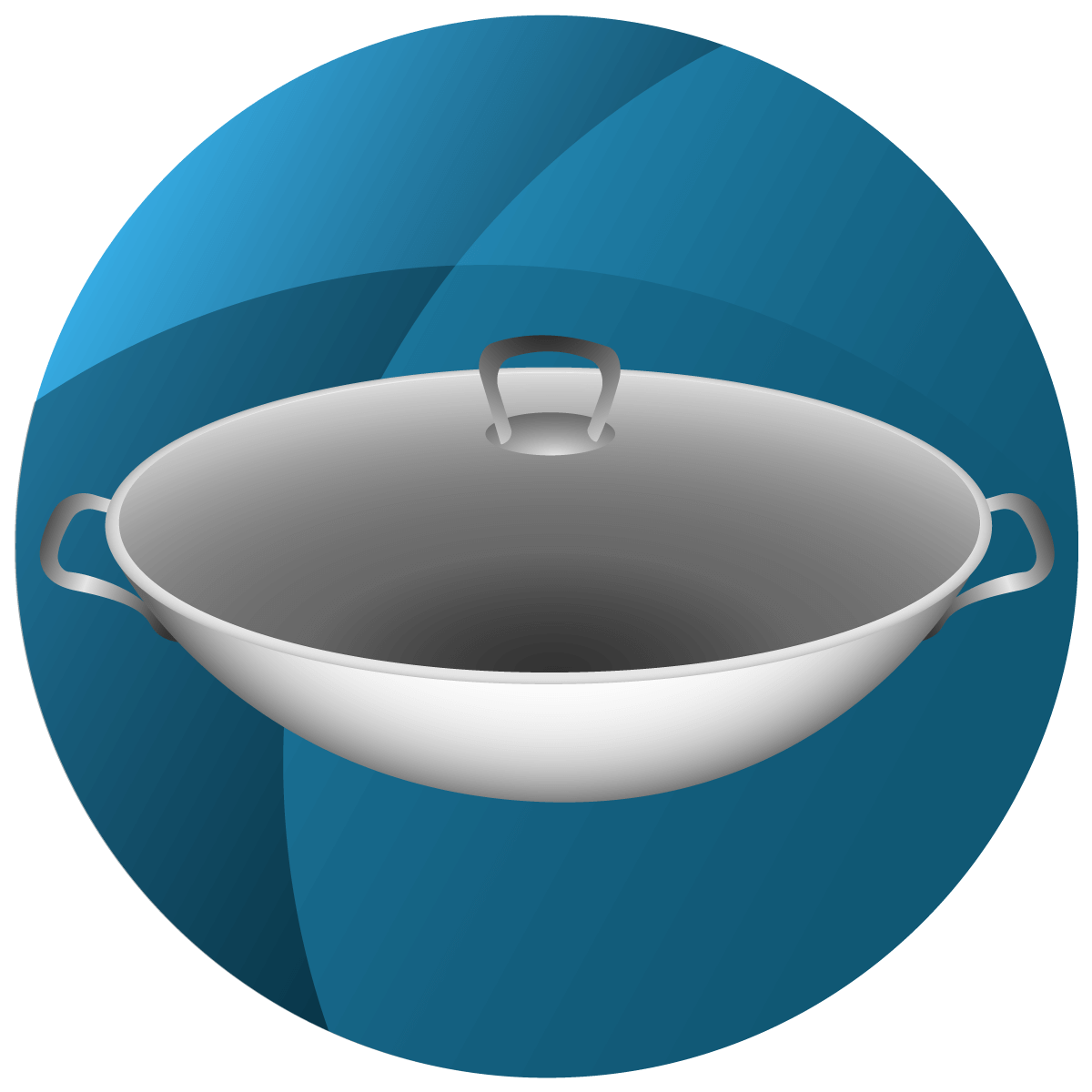
Wok
Woks originate from Asia, and are great for cooking meals quickly. They have a unique bowl shape, which is perfectly designed for stir-frying. They are easy to handle and are often non-stick, so you can cook healthy, low-fat meals without any hassle.
Other purchase criteria
Alongside material, coating, and pan shape, there are a few other things that can influence your purchase. Read on for the most important factors.
Price
Good pans do not have to be expensive. Price is largely determined by material. For example, aluminium pans are comparatively cheap, whereas wrought and cast iron pans cost more due to craftsmanship and material cost. Copper pans are the most expensive – not only is the metal material cost high, they are also often hand made.
Weight
In general, heavier pans are more stable and distribute heat more evenly. However, you don’t want an extremely heavy pan – you will want to be able to lift and move the pan with one hand. Aluminum pans are among the lightest, cast iron the heaviest.
Shape
Make sure you get a pan that is compatible with your cooker. In most cases, go for a round pan that fits your burners. You don’t want a pan that is too big for your cooker, as it could cause it to warp. This said, things like grill pans are often square which is useful because you can fit more food in them.
Diameter
Diameter is an important thing to consider when buying a pan. Most manufacturers will give measurements from the upper edge of the pan, which can mean that the base diameter is actually much smaller. For example, a pan with a diameter of 10 inches (24cm) can have a base diameter of between 6 and 8 inches (15.5-20cm). When buying pans, you should choose ones with different sizes. This will help when it comes to having the right pan for the right dish, as well as the right pan for each burner size.
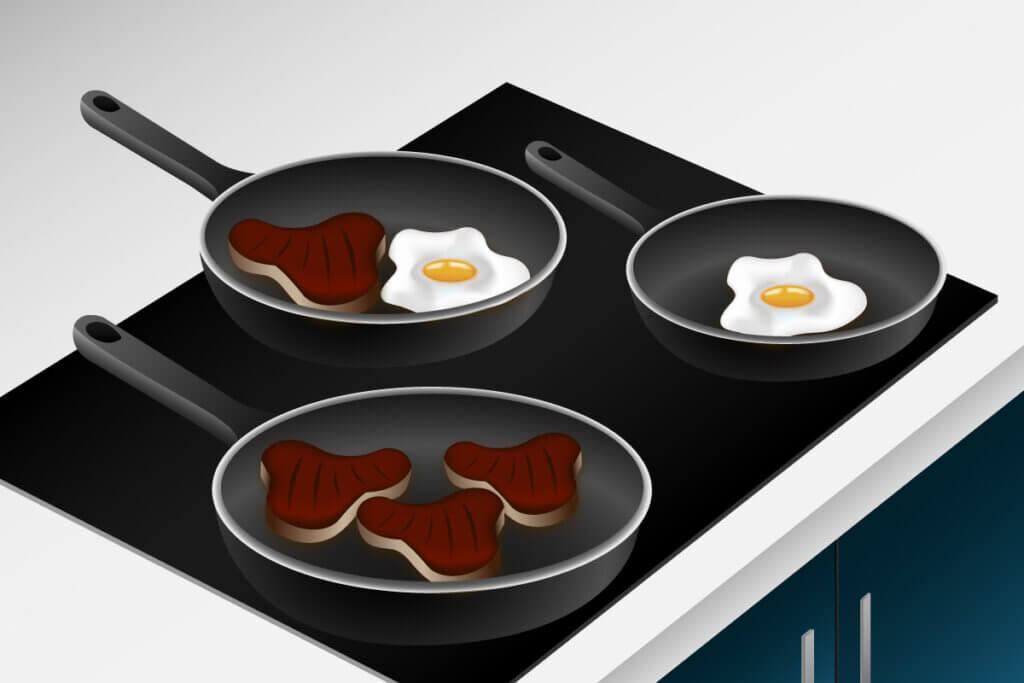
Rim height
The rim height of your skillet will determine how much liquid or sauce it can hold. Higher edges mean you will get less liquid bubbling or spitting out of the skillet, whereas lower edges make it easier to flip whatever is in the pan. Some pans have pouring rims, which can be great for things like gravy.
Lid
Lids are a great option especially for pans you want to braise food in. Less heat is lost when you use a lid, and if your pan doesn’t come with one, you can often buy universal ones. The diameter measurements of these lids correspond to the upper edge of your pan.
Handle
When choosing a pan, make sure that the handle is sturdy and fits tightly. You will need to re-tighten screw handles from time to time. The main thing to remember is that plastic and wood handles are not ovenproof. Removable handles are a great option if you want to use your pan for baking – they are also useful if your storage space is limited.
Usage tips
If you want your skillet to last for a long time, you will need to care for it properly. Coated pans are easy to maintain, all you need to do is wash it with dish soap and water after using it. In fact, a lot of pans are even dishwasher-compatible. By contrast, uncoated pans require a bit more care, as detailed below.
How to season cast iron
Cast iron pans can come either coated or uncoated. If you go for an uncoated one, you will need to season it with oil before the first use. This will protect the pan from rust, as well as giving it a non-stick coating. Some manufacturers sell pre-seasoned cast iron pans, but the process is not too difficult. In short, you need to heat a high-smoke point oil (sunflower or rapeseed for example) in the pan until it smokes, and then discard it. Afterwards, rub the pan with a little oil using a cloth.
Cleaning iron pans
Seasoned cast iron pans are easy to clean, there are just a few things you can’t do with them. The main thing is that you can’t put them in the dishwasher, and you actually also want to avoid using dish soap too – once in a while is fine. To clean your cast iron pan, remove any food residue with kitchen paper and then rinse it. Make sure never to store your cast iron pan wet, as this can cause rust. If you can’t get rid of all the food, put some lukewarm water (without soap) in the pan and let it soak for half an hour. This should loosen any residue.
Coated iron pans are easier to clean as you can use dish soap. They also are usually not dishwasher-safe – you should just check what the manufacturer recommends. The main thing to watch out for with coated iron pans is to not put cold water into them when they are still hot. This can cause the coating to crack.
Wrought iron and hot cookers
Never put a cold wrought iron pan on a hot cooker. The temperature difference can cause the pan to deform, so always heat wrought iron gently from cold.
Cast iron and ceramic cookers
Cast iron pans can damage ceramic (glass top) cookers if you don’t use them properly. Cast iron is heavy, and the underside of the pan can sometimes be a bit rough. This can cause scratches on the glass when you move them around, so make sure to lift your pan carefully.
Cast iron and induction hobs
Cast iron pans can be used on all cooker types. In fact, non-coated cast iron can also be used in the oven, so long as the handle is oven-safe. You can even use them on open fires! However, enamel-coated cast iron should not be exposed to temperatures above 500 °F (260 °C), so don’t put them in the oven or in your camp fire.
What temperatures are best for cast iron?
Cast iron has great thermal conductivity and stores heat well. The most effective way to use cast iron is at medium temperatures: heat the pan on full for a few minutes and then turn your cooker down. You won’t need to cook with the burners on full, as cast iron keeps its temperature well.
Cleaning copper
Copper is a comparatively soft metal and can therefore be damaged if you put it in the dishwasher. The best way to clean a copper skillet is with non-abrasive soaps. You can also use polishing paste to help keep the copper shiny.
Image 1: © FinalCheck | Image 2: © Rob Stark / stock.adobe.com | Images 3-9: © FinalCheck

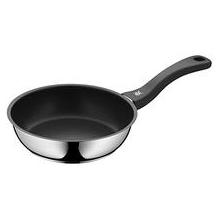
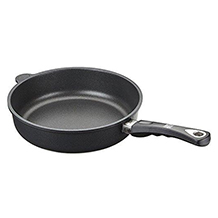
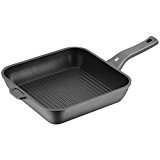
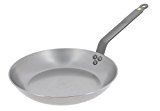
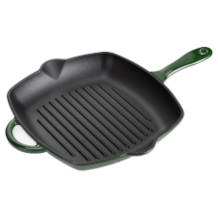
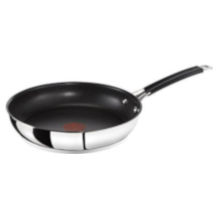
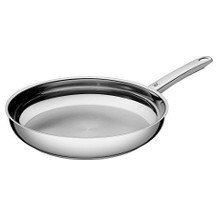
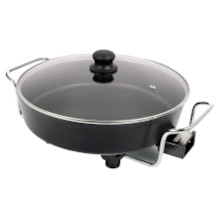
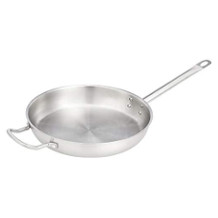
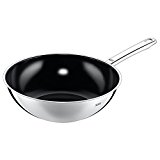
























 2,659 reviews
2,659 reviews
